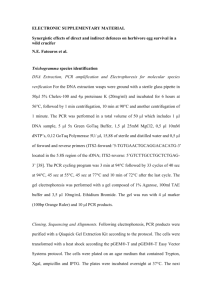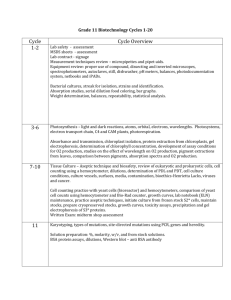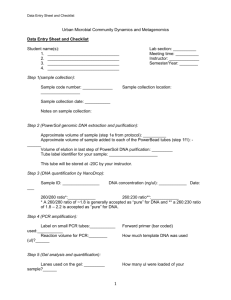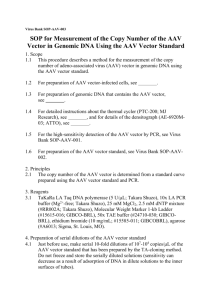SOP for High Sensitive Detection of Adeno
advertisement
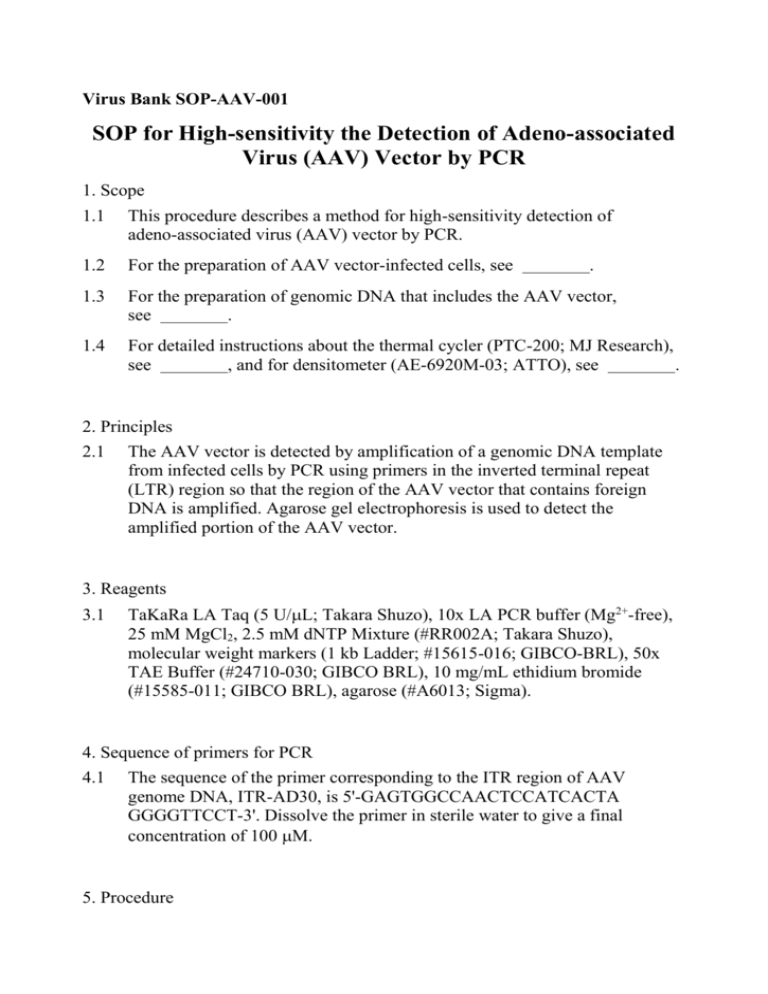
Virus Bank SOP-AAV-001 SOP for High-sensitivity the Detection of Adeno-associated Virus (AAV) Vector by PCR 1. Scope 1.1 This procedure describes a method for high-sensitivity detection of adeno-associated virus (AAV) vector by PCR. 1.2 For the preparation of AAV vector-infected cells, see 1.3 For the preparation of genomic DNA that includes the AAV vector, see . 1.4 For detailed instructions about the thermal cycler (PTC-200; MJ Research), see , and for densitometer (AE-6920M-03; ATTO), see . . 2. Principles 2.1 The AAV vector is detected by amplification of a genomic DNA template from infected cells by PCR using primers in the inverted terminal repeat (LTR) region so that the region of the AAV vector that contains foreign DNA is amplified. Agarose gel electrophoresis is used to detect the amplified portion of the AAV vector. 3. Reagents 3.1 TaKaRa LA Taq (5 U/L; Takara Shuzo), 10x LA PCR buffer (Mg2+-free), 25 mM MgCl2, 2.5 mM dNTP Mixture (#RR002A; Takara Shuzo), molecular weight markers (1 kb Ladder; #15615-016; GIBCO-BRL), 50x TAE Buffer (#24710-030; GIBCO BRL), 10 mg/mL ethidium bromide (#15585-011; GIBCO BRL), agarose (#A6013; Sigma). 4. Sequence of primers for PCR 4.1 The sequence of the primer corresponding to the ITR region of AAV genome DNA, ITR-AD30, is 5'-GAGTGGCCAACTCCATCACTA GGGGTTCCT-3'. Dissolve the primer in sterile water to give a final concentration of 100 M. 5. Procedure 5.1 For PCR, prepare 49 L of PCR mixture that contain the components shown below (without template DNA) in a 200-L reaction tube. Add 1 L of a solution of template DNA (50 ng/L). Perform amplifications in a programmed thermal cycler. Wear gloves and keep reagents on ice during the entire procedure. PCR mixture (per sample) 10x LA PCR Buffer 5.0 L Template DNA (genomic DNA) 5.0 L ITR-AD30 (100 M) 0.5 L dNTP mixture (2.5 mM each dNTP) 4.0 L TaKaRa LA Taq DNA polymerase (5 U/L) 0.25 L Sterile water 39.25 L --------------------------------------------------------------------50.0 L Program for the thermal cycler for PCR 5.2 The amplified product of PCR is detected by agarose gel electrophoresis. To prepare the agarose gel, suspend agarose (1% w/v) in 1x TAE Buffer (diluted with Milli-Q water). Heat the suspension to dissolve the agarose completely and allow to cool but not to gel. Pour the solution into a Mupid-2 gel maker set (#EM-2; Advance) using 35 mL for a large plate (107 x 60 mm) or 18 mL for a small plate (52 x 60 mm). Place a comb in the gel (#COMB25; Advance; large plate, 25-well comb; small plate, 12-well comb) and leave to cool and harden. For electrophoresis, to 5 L of the product of PCR, add 1 L of 6x gel-loading buffer (0.25% bromophenol blue/0.25% xylene cyanol/30% glycerol). Load 5 L of thus mixture per well and fractionate samples by electrophoresis in 1x TAE Buffer, for 30 min, at 100 volts. 5.3 Soak the gel in a solution of ethidium bromide in Milli-Q water (2 g/mL) for 5 min at room temperature. Then wash the gel with tap water for 5 min. Visualize bands of DNA under UV light (312 nm), and capture the image with a densitograph (AE-6920M-03; ATTO). Analyze the picture with software ''one Densitometry'' and determine the fluorescence density of the band of product of PCR of approximately 3.7 kbp. Save the data as a text file using ''Microsoft Excel 5.0'' software. 5.4 Example of detection




